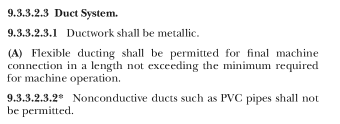You need blast gates for sure. The physical size, electrical requirements, and deafening, droning noise of such a massive system isn’t what we need.
You are correct about minimum flow velocities. That actually can be a tricky situation to keep chips entrained, while keeping flow resistance low. Sanding dust is easy, but like the table saw and planer make heavy chips and debris.
A long run of 4" pipe creates excessive flow resistance that may make for poor flow no matter how powerful the DC is.
But 4" is the max size for a lift pipe from a chip source with a 4" port. More and the CFMs may be better, but the velocity is too slow to blow chips upwards.
A 4" horizontal run is probably too much resistance for even one tool over distance, and definitely too much resistance if multiple branched tools are turned on.
But the difficulty is that 6" pipe is only 45% of the velocity. That can actually be too SLOW for a single tool producing chips, if only a single 4" port is feeding it. In some cases you may need to hook it up so 2 ports on a leg open together so there’s adequate flow velocity through the 6" pipe.
Now a table saw, you can- and probably have to- put a crap trap inline can because sometimes you get like 3"-6" strips of wood through the port that cannot flow and just block the pipe. There’s a grill on the miter station. But a planer and the CNC produce crazy stuff. Big chips, the CNC sometimes makes long plastic strings. Trapping it with a small can sounds impractical because that can be literally all the output of a planer, not just odd, rare chunks. Cubic feet of chips are what it does.
So there is one hybrid solution- to avoid multiple dust collectors (which come with additional electrical requirements) and filters, you can set it up so there’s like a 22 gal trash can collector by the planer to collect the heavy debris, but no dust collector motor/filter there. It runs large dia, low resistance pipe that runs at low velocity, low resistance, but high CFM to the DC, cyclone, and filter. Then you only have dust in the line, not heavy chips, and you get high CFM but nothing stuck in the system despite the low air velocity.

